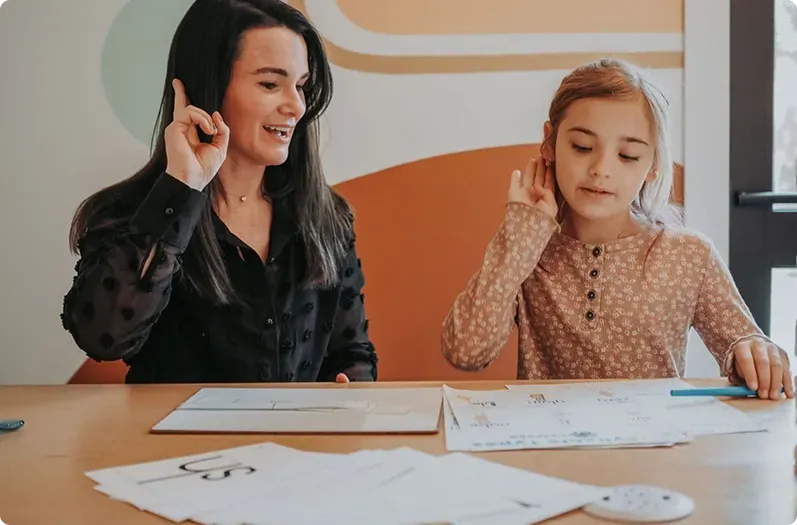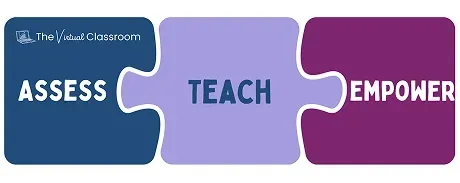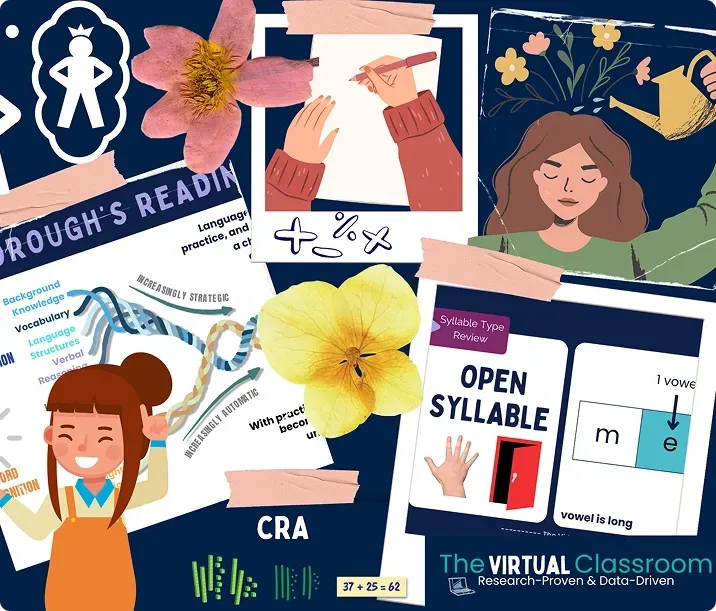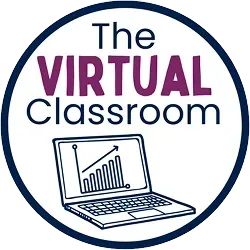
Do any of these sound familiar?






If you’re nodding your head to any of the above, then you’re in the right place—and you’re not alone.
Start Building Your Child’s Success Plan
Let’s talk about your child’s reading journey, what’s been working, what’s been hard, and what kind of support might help them thrive. During your Student Success Planning Session, we’ll go over your goals, answer your questions, and make sure our programs are a good match for your child’s needs and stage of learning.
You’ll walk away with clarity on what your child needs and what to do next.
How We Get Results

What People Say After Working With Us

Curious what other think?
Go Behind the Scenes With Us
Watch a Lesson In Action
Wondering how we actually teach reading? In this short video, you’ll see how we get to know each student, what our lessons really look like, and how we keep kids motivated while building the skills that matter most.
We’ll help you find the support that fits best.
Why Choose The Virtual Classroom?

Research-Proven Approaches That Work
We use proven methods like Structured Literacy, Active Participation, and Game-Based Learning to build strong readers. No guessing, no memorizing—just evidence-based instruction that leads to real progress in reading and spelling.

Customized, Data-Driven Plans
We begin with a comprehensive diagnostic assessment to pinpoint your child’s strengths and gaps, then build a plan tailored to exactly where they are—whether they need foundational support or are ready for more challenge. Every session is intentional and builds skills, confidence, and momentum.

Highly Qualified, Passionate Educators
Your child will be taught by experienced, certified educators trained in the Science of Reading and Structured Literacy. Our team includes reading specialists, special education experts, and master-level teachers with a strong track record of helping students grow.

Confidence + Growth Mindset Built In
We don’t just teach reading—we help kids believe in themselves. Alongside research-based instruction, we integrate growth mindset coaching so students build confidence, resilience, and a renewed love of learning.

Flexible Schedules, Real-Life Convenience
We offer daytime classes for homeschool families and evening sessions for public school students. With our virtual programs, your child can attend from anywhere—at home, on vacation, or even in a different time zone.
Talk with us about your child’s needs and learning goals.
Tutoring Programs

Homeschool Programs

Mission & Vision Statements
Our Vision
Building Foundations for Brighter Futures
We guide students from foundational reading skills to academic independence through research-backed instruction and a growth mindset approach.
Our Mission
Our mission is to ensure that every child has access to high-quality, research-based instruction that empowers them to reach their full potential.
We build strong foundations in literacy and math, turning instructional gaps into stepping stones for success. By coaching both parents and educators on best practices, we foster confidence, ignite a love of learning, and help every child grow into a capable, independent learner.
Learn more about the educators behind The Virtual Classroom.

We Support Diverse Learners and Families
Our specialists are experienced in working with:
- Homeschooling families
- Neurodiverse learners, including those with dyslexia, dysgraphia, dyscalculia, ADHD, ASD, intellectual disabilities, and Down syndrome
- Children learning English as a second language
Whether your child needs extra support, a more tailored approach, or a safe place to thrive, we’re here to help.

Start Building A Plan That Fits
Let’s talk about your child’s current challenges, goals, and learning needs. In this Student Success Planning Session, we’ll see if your child qualifies for one of our programs and if so, we’ll create a personalized plan to help them build skills, confidence, and momentum.
Frequently Asked Questions
What makes The Virtual Classroom different?
At The Virtual Classroom, we use teaching methods backed by over 50 years of research across neuroscience, cognitive psychology, and education. We know how the brain learns to read and understand math—and we use that knowledge every day.
While most schools still rely on outdated approaches like balanced literacy (which doesn’t work for 60–70% of students), we follow the science. Our instruction is diagnostic, data-driven, and rooted in structured, evidence-based methods. And our students not only make faster progress—they actually enjoy learning, thanks to our engaging, game-based lessons.
How much does the program cost?
Tuition depends on your child’s support needs, whether they’re in a 1:1 or small group setting, how long their sessions are, and how often they attend each week. Most students attend 2–3 sessions per week, and families typically invest between $250–$900 USD per month.
If your child qualifies for one of our programs and it feels like a good fit for your family, we’ll walk you through the available options and share tuition details based on your child’s needs and your schedule.
We’re also an approved vendor for several state ESA (Education Savings Account) scholarship programs, which can help cover tuition costs. If you’re using ESA funds, we’ll guide you through the process step by step.
Do you offer virtual or in-person classes?
We offer both! Virtual programs can be accessed from anywhere (even on vacation), and we also offer in-person sessions at our New Bloomfield, PA Learning Center.
What ages do you work with?
We don’t work with a particular age group, we work based on skill level. Our specialty is teaching foundational reading skills like decoding, fluency, and comprehension. If your child isn’t yet reading chapter books independently with strong understanding, they’re likely a great fit for one of our programs.
How do you teach literacy?
We use a Structured Literacy approach—explicit, systematic, cumulative, and multisensory. It’s based on how language works, how the brain processes print, and how students learn best. Structured Literacy has been proven effective for all learners—not just struggling readers—and it’s the only method supported by decades of scientific research.
How many students are in your small groups?
Our small groups typically include 2–4 students, depending on learning needs and age level. Occasionally, we offer special programs at a reduced rate that serve up to 10 students per group but those are limited and only available at certain times of the year.
Do you support students with learning differences or disabilities?
Yes! Our team is trained to support a wide range of learning needs, including students with dyslexia, ADHD, autism, intellectual disabilities, and down syndrome. We use research-proven strategies to meet each student where they are and help them grow at their own pace—with compassion, patience, and high expectations.
Why is my third grader suddenly having reading problems?
Many early reading programs use leveled texts and follow a balanced literacy approach. In balanced literacy, children are often taught to rely on context clues—like pictures or the first letter of a word—to guess unfamiliar words, along with memorizing high-frequency word lists.
This can create the illusion that a child is reading well in the early grades. But by third grade, texts become more complex and pictures disappear. That’s when foundational gaps become harder to hide—and many kids who seemed “fine” suddenly begin to struggle.
To be a skilled reader, a person needs to know about 30,000 words. That’s a lot to memorize by sight—and it puts unnecessary strain on the brain.
When children rely on memorizing instead of decoding, their brains actually bypass the auditory cortex—the part responsible for processing sounds and language. This can lead to letter reversals, word skipping, and weak comprehension.
So to answer your question directly:
Your child is likely struggling now because they were never taught the code—how English actually works.
Structured literacy teaches students the 42–44 sounds in English and the 250+ letter patterns (graphemes) used to represent them. Doesn’t that sound easier than memorizing 30,000 words?
Science shows that it is.
How do I get started?
Getting started is simple! Just book a Student Success Planning Session directly on our calendar. During the call, you’ll have a chance to share more about your child’s unique needs and goals. We’ll talk through what’s going on, determine if one of our programs is the right fit, and walk you through the next steps if it is.
Stay Connected
Want tips, updates, and a closer look at what we do?
Follow us on social media to stay connected with The Virtual Classroom community!


8401 Spring Road Suite 2 New Bloomfield, PA 17068

[email protected]

(717) 470-2717





